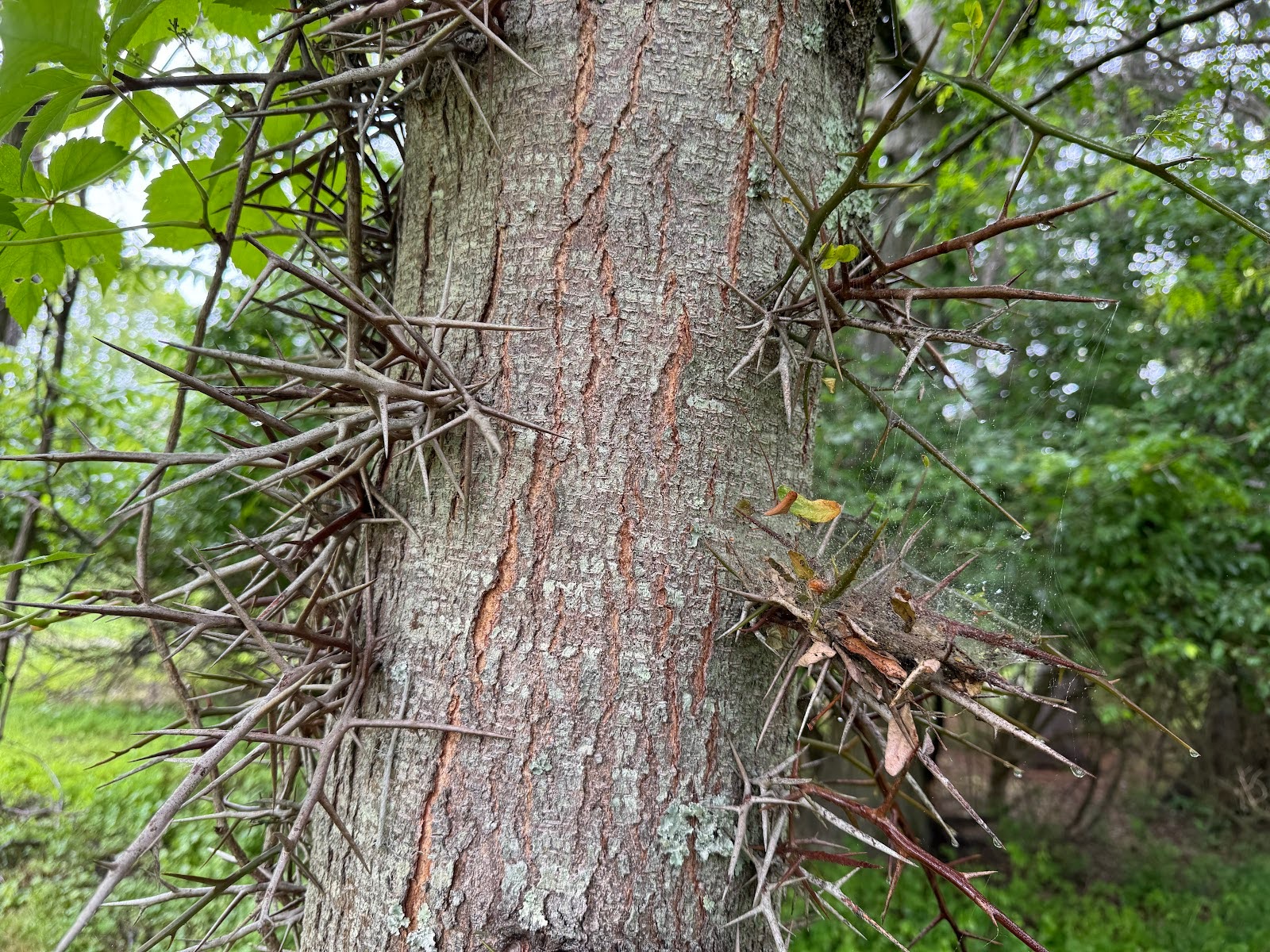Tree identification can be an intimidating pursuit. The path of least resistance involves keeping vague that blanket of green that provides us with shade in the summer. I took that path for longer than I wish I had. What I’ve come to realize is that tree ID is a lifelong pursuit, and the sooner you start, the sooner your wandering becomes enriched and informed. If you’re just getting started, I have really good news: There are several PA species of trees that you can identify by looking at their bark alone!
Identify These Five PA Trees By Bark Alone
The beautiful thing about using bark as an ID characteristic is that it’s around all year. Whether it be in the dead of winter or peak summer, you can easily identify the following species by looking at only their bark. Let’s start with one of my favorites:
Musclewood (Carpinus caroliniana)
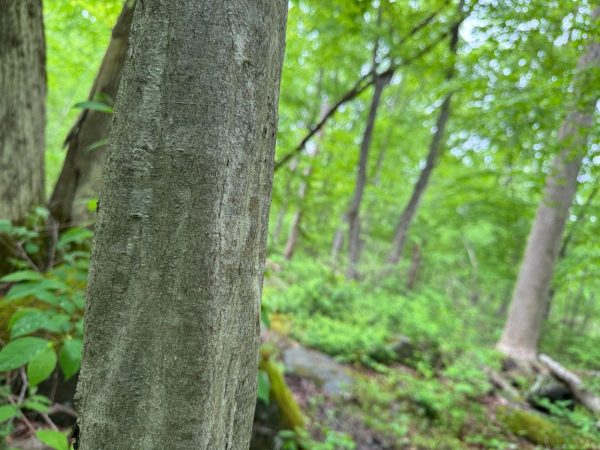
Musclewood, also known as American Hornbeam, is a small tree that is frequently found in moist, rich woodlands. It has one of those rare common names that is perfectly sensible. The trunk of the tree is smooth, but textured with rippling ridges, sort of resembling the texture of a muscle. The only other species with bark quite as smooth at maturity is the American Beech (Fagus grandifolia), but they lack the deep grooves that Musclewoods have and grow to be much, much larger.
Musclewood serves as an important component to our forests’ understories, growing taller than most shrubs but shorter than most trees. Their intermediate height helps them add to a forest’s structural diversity.
Hophornbeam (Ostrya virginiana)
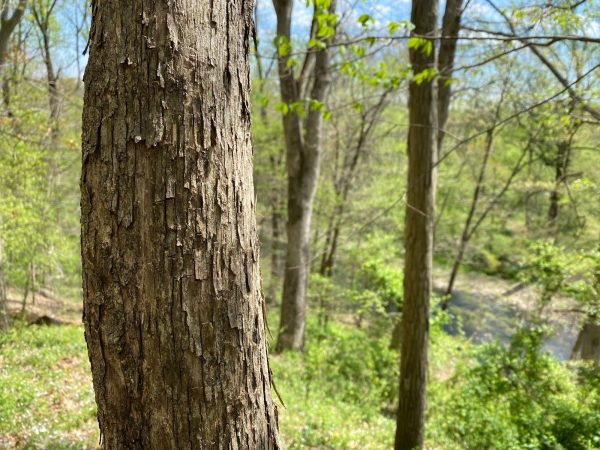
Hophornbeam, not to be confused with the previous species, is another tree that’s easy to ID by looking at its bark alone. They have messy, flaky bark that almost resembles a tree that was put through a shredder. Similar to Musclewood, Hophornbeam is a species of the understory, contributing to a forest’s structural diversity. They tend to grow on drier sites, so you might run into some while hiking along hillsides, though they are adaptable and will readily grow in moist environments too. You’re unlikely to find large stands of this species, as they tend to distribute themselves sporadically throughout the forest. But once you do come across one, it will be no question as to what species you’re looking at. That shaggy bark is unmistakable.
Hackberry (Celtis occidentalis)
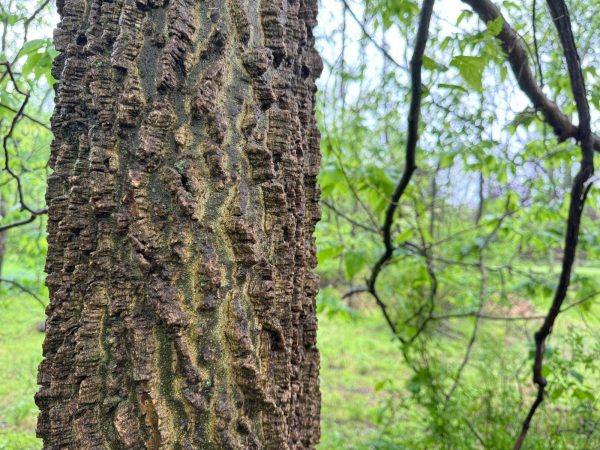
Hackberry is not a species that is mentioned all that often. In southeastern Pennsylvania, it’s rarely the most common species at any given site, and these trees don’t have too many showy or colorful features. Their leaves are simple and serrated, as are the leaves of many native tree species. Their flowers are small, and greenish-yellow, so they blend in with just about everything. Their bark, however, is nothing to look past, and is maybe the most distinctive of any species in this article.
Mature trees possess an obviously corky appearance, with prominent, irregular ridges running along the length of the trunk, which is appreciable even from a fair distance away. The best description I’ve seen of Hackberry bark is that it looks like “a miniature grand canyon on its side.” That might require a little imagination but I think it’s an apt description.
Black Cherry (Prunus serotina)
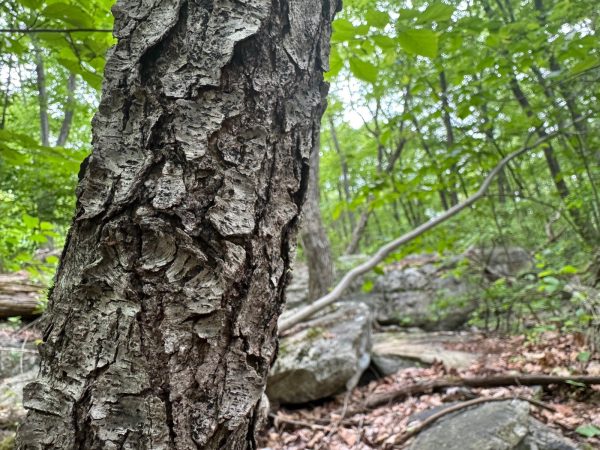
My personal favorite on this short list of tree species, the Black Cherry, is both an incredibly common and easy to ID tree species native to Pennsylvania. The first thing you’ll notice about the bark of this tree is that it’s exceptionally dark, making it stand out well amongst the other trees. Additionally, and with respect to texture, you’ll also notice the heavily cracked and flaky bark, which I’ve heard folks say resembles burnt potato chips.
Once you become familiar with this species, you’ll likely see them everywhere. Their fruits are beloved by birds and other mammals, and consequently, their seeds are distributed far and wide. They also tend to establish in newly disturbed areas, and given our propensity to disturb land, this species has become very common. Black Cherry is a host species for hundreds of caterpillar species, so keep an eye out not only for Black Cherries but the diverse array of wildlife that they support.
Honey Locust (Gleditsia triacanthos)
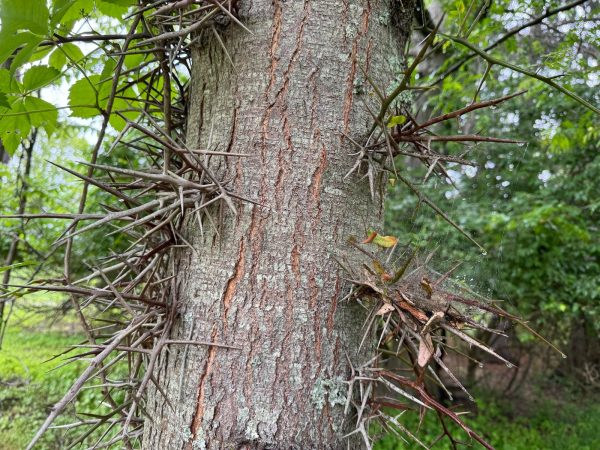
Perhaps the least welcoming-looking tree we’ll highlight here is the Honey Locust. There’s almost no questioning whether you’re in the presence of this species. The thorns, which distinctly grow along the trunk of the tree, in addition to the branches, are large and formidable. That is, so long as you’re looking at a wild type tree. There are cultivars of Honey Locust that lack these spines, which you can find planted widely as ornamental trees.
In my opinion, a honey locust without a trunk full of spiny armor is hardly a Honey Locust at all. Nonetheless, this species is a fast grower typically found along rivers, and it serves as an important source of energy for pollinators, and bees in particular. Interestingly, it’s thought that the thorns of the Honey Locust evolved to dissuade extinct megafauna (mammoths, ground sloths, etc.) from causing damage to the trees. Keep an eye out for the mighty Honey Locust, not only to be inspired but also for your own safety!
There are many more tree species that are identifiable by their bark. We’ve provided this short list of five PA trees to identify by bark alone with the hopes of getting folks started on their tree identification journey. The more you know your trees, the more you’ll know the forest and the critters that occupy it. We hope you feel inspired to start small, but get started nonetheless. There are trees out there waiting to be appreciated. Thanks for reading.
Text and photos by Sebastian Harris, Conservation Easement Steward at Heritage Conservancy
